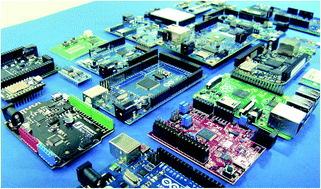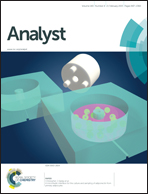Universal electronics for miniature and automated chemical assays†
Abstract
This minireview discusses universal electronic modules (generic programmable units) and their use by analytical chemists to construct inexpensive, miniature or automated devices. Recently, open-source platforms have gained considerable popularity among tech-savvy chemists because their implementation often does not require expert knowledge and investment of funds. Thus, chemistry students and researchers can easily start implementing them after a few hours of reading tutorials and trial-and-error. Single-board microcontrollers and micro-computers such as Arduino, Teensy, Raspberry Pi or BeagleBone enable collecting experimental data with high precision as well as efficient control of electric potentials and actuation of mechanical systems. They are readily programmed using high-level languages, such as C, C++, JavaScript or Python. They can also be coupled with mobile consumer electronics, including smartphones as well as teleinformatic networks. More demanding analytical tasks require fast signal processing. Field-programmable gate arrays enable efficient and inexpensive prototyping of high-performance analytical platforms, thus becoming increasingly popular among analytical chemists. This minireview discusses the advantages and drawbacks of universal electronic modules, considering their application in prototyping and manufacture of intelligent analytical instrumentation.



 Please wait while we load your content...
Please wait while we load your content...